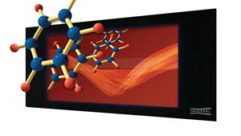Smart Building Technologies Basics
Nov 18, 2011 10:12 AM,
Provided by InfoComm International
The AV industry often sits at the crux of revolutions in building design and technology. IT network convergence, green technology, and integrated project delivery (IPD) are changing the way people design, inhabit, and use a building.
AV professionals are now turning their attention to smart building technologies (SBT), a growing force within the design and construction industries that, once again, requires a strong AV industry presence.
“The problem with existing buildings is that facility managers have little information on how the building is performing, so management of the building’s performance is poor,” explains James M. Sinopoli, PE, LEED AP, RCDD, managing principal of Smart Buildings. Sinopoli is a design engineer who has worked on approximately 600 buildings over the last 25 years and is a member of the InfoComm Intelligent Building Technology Task Force. “Integrating building systems is what SBT is all about; systems like building automation systems, building management systems, HVAC, life safety, security, AV, and lighting.”
“The challenge with SBT is that, historically, every discipline in the construction industry is a silo,” says Michael Carter, director of integrated building solutions at AMX and fellow IBT Task Force member. “At some point, some of them connect, but they pretty much are on their own. Building automation dates back to the 1950s, but now the notion of what automation is has changed.”
AV technology, Carter points out, currently exists in intelligent buildings with building automation, but SBT goes yet another step beyond to a truly integrated building. The difference between the two is a subtle but very important distinction.
Understanding SBT
The key to wrapping one’s brain around SBT is to understand that there are many definitions under which it operates. “SBT is a continuum,” Carter says. “It has dozens of definitions and all are true. SBT is a process; not a final product.” The InfoComm IBT Task Force defines SBT as “a process of conceiving, designing, constructing, commissioning, and operating buildings, which leverages technology to optimize the goals and objectives of the built environment.” SBT occurs within the construct of an intelligent (or smart) building.
“The goal of SBT is to integrate all building systems in the same way an AV professional integrates the AV systems in a room,” says David Wilts, LEED AP BD+C, director of integrated building technologies for Crestron and chair of the Integrated Building Technologies Task Force. “SBT can seem like a vast topic but it’s really straightforward. As one becomes more familiar with the different technologies, it becomes rote. We’re trying to encourage the AV industry to understand that SBT has happened on the residential side for over a decade, albeit on a smaller scale.” Wilts says that, in many cases, he gets called in on an SBT project because the owner wants a “living” building—a building that responds to how people behave in the building and to changes in the microclimate. Not all projects begin as SBT projects, but once a building owner understands what SBT can produce, then proceeding down the SBT path only makes sense.
Sinopoli echoes the sentiment that SBT is a great opportunity for AV professionals since the general concept of integration is the same. “Integrating an entire building versus 50 pieces of AV equipment in a system is not that different,” he says. “The difference is that the objective is much broader and a bit different than a typical AV project.”
This is an excerpt from an InfoComm Special Report on Smart Building Technology. To read the complete report, visit www.infocomm.org/specialreports.










